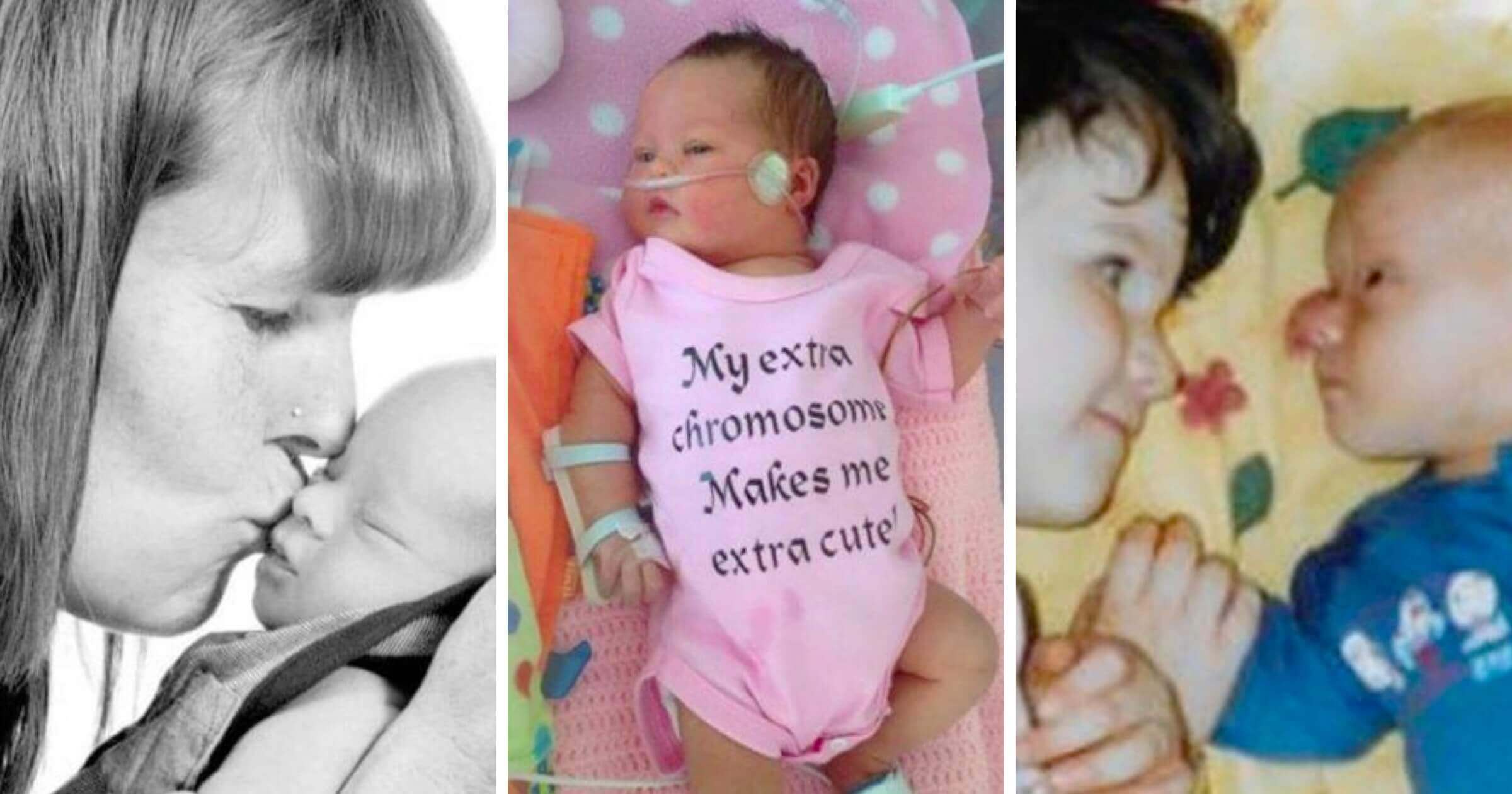One woman was offered 15 abortions, another was told how she made her sonographer “sick” because she refused amniocentesis which might cause a miscarriage, and a third had her midwife burst into tears. All this happened because these mothers had were expecting a baby with Down’s syndrome but they did not want an abortion.
Lorraine and Jaxon’s story
Jaxon is described as “a little comedian” with a “really cheeky” sense of humour. He’s a typical six-year-old who happens to have Down’s syndrome.
Because Lorraine was 45 when she was pregnant with Jaxon she was persuaded to have additional screening. But Lorraine couldn’t understand why everyone was so negative.
The sonographer explained that if the baby showed markers that indicated that her baby had Down’s syndrome, the next step would be an amniocentesis, a test which carries a small chance of a miscarriage.
“I said no, we wouldn’t be interested, partly because we had lost a baby the previous year. She was very aggressive and said ‘women like you make me sick. Why bother having a screening at all if you’re not going to do anything about it?'”
A midwife later phoned, saying she was “ever so sorry” but had “really bad news”, confirming the baby had a one-in-five chance of having Down’s syndrome.
Lorraine said: “The support was only there if I chose to have an abortion, and that was what they presumed, but they weren’t interested when I said I wanted to keep Jaxon”.
Her son was diagnosed at birth and Lorraine says the family has never looked back. She says her other children adore him and will fight over who gets to look after him when they are older.
“I want him to get married and work and have a normal future. We know he will always need support but we really believe he will lead a full life. He’s a showman, a real entertainer and we think he will end up on the stage”.
Emma and Jaimie’s story
Emma Mellor was under pressure to have an abortion from the moment her doctors realised that her daughter was likely to be disabled after a 20-week scan.
“In all honesty we were offered 15 terminations, even though we made it really clear that it wasn’t an option for us, but they really seemed to push and really seemed to want us to terminate”, she says.
At the same time Emma was pregnant with Jaimie, her son Logan was on the waiting list for surgery, having been born with a hole in his heart. Emma said she could not imagine ending their daughter’s life with an injection in the heart to stop it beating – the normal abortion method after 22 weeks – while they were waiting to fix their son’s.
At 32 weeks, a test confirmed that Jaimie had Down’s syndrome and doctors reminded Emma multiple times that she could be legally aborted until birth.
“At 38 weeks, the doctors made it really, really, really clear that if I changed my mind on the morning of the induction to let them know, because it wasn’t too late”.
“I was told that until my baby had started travelling down the birth canal, I could still terminate”.
Emma refused every offer for an abortion and Jaimie was born with Down’s syndrome but otherwise perfectly healthy. Five years later, Jaimie is a happy child in mainstream education.
“She loves dancing and trampolining. She has a few difficulties but she is just like any other child her age. She lights up the room and people just gravitate towards her”.
Tom and Nicola’s story
Nicola Enoch was pregnant at 39 and booked in for amniocentesis to discern whether or not her baby had Down’s syndrome. At the last minute however, she cancelled this test as she was concerned that she might lose her baby. There is a small chance of miscarriage during this test and Nicola had already had four miscarriages.
When her son was born some months later, he was confirmed to have Down’s syndrome. Doctors said he would never be able to go on a trampoline and a community midwife burst into tears.
Nicola grew distant from her baby and considered having him adopted.
“I was grieving for the baby I had hoped for and expected, terrified of the future, and I actually wondered if it would be better for us all if Tom didn’t survive”, she said.
Over the course of the next year however, Nicola began to fall back in love with her son as she asked herself “what is so wrong with him having Down’s syndrome?”
Tom is now 16 and in mainstream education. He’s a fan of West Bromwich Albion, enjoys golf, snorkelling, kayaking and hopes to get a job and get married.
Nicola said cancelling the amniocentesis was the best decision she ever made: “I am terrified I would have terminated Tom’s life. I was led to believe he would have a negative impact on our lives but he has enriched them and we are without doubt better people for having him in them”.
The Royal College of Obstetricians and Gynaecologists (RCOG) have recently produced guidance telling healthcare professionals that they must not pressure women into having abortions following a diagnosis of Down’s syndrome or any other disabling condition.
Right To Life UK’s spokesperson, Catherine Robinson, said:
“It’s wonderful that despite the pressure, all these women chose life for their babies. The attitude of so many healthcare professionals is deeply concerning and sadly far too common, but RCOG’s change in guidance is certainly a step in the right direction”.











